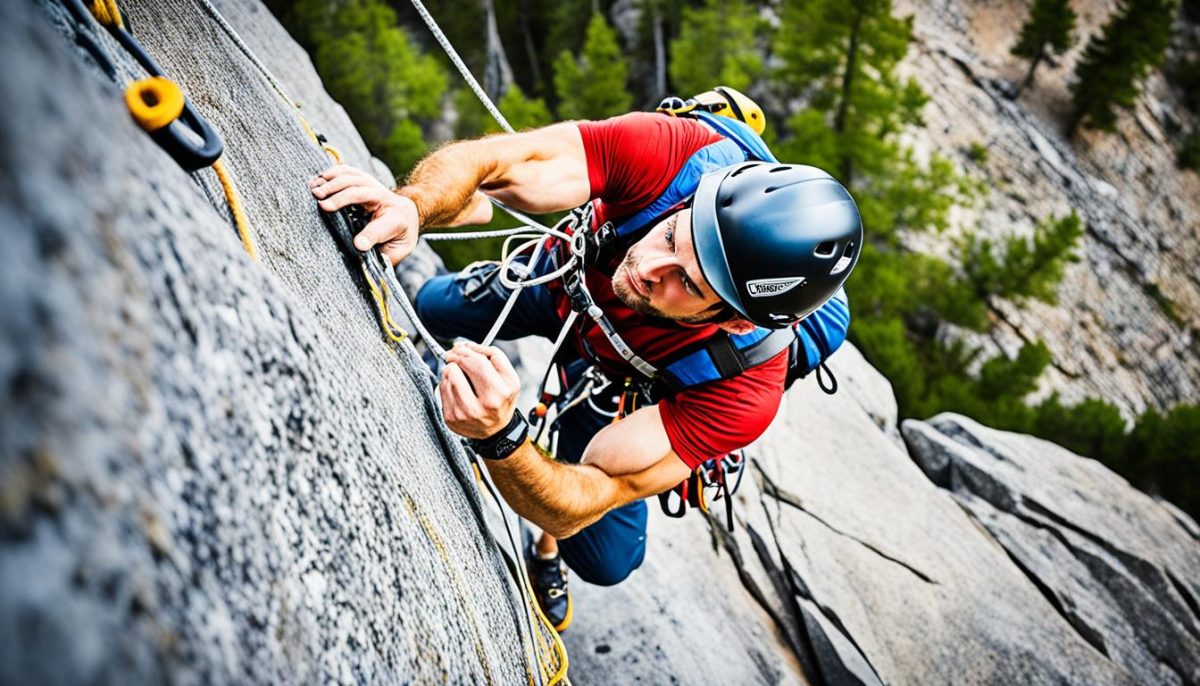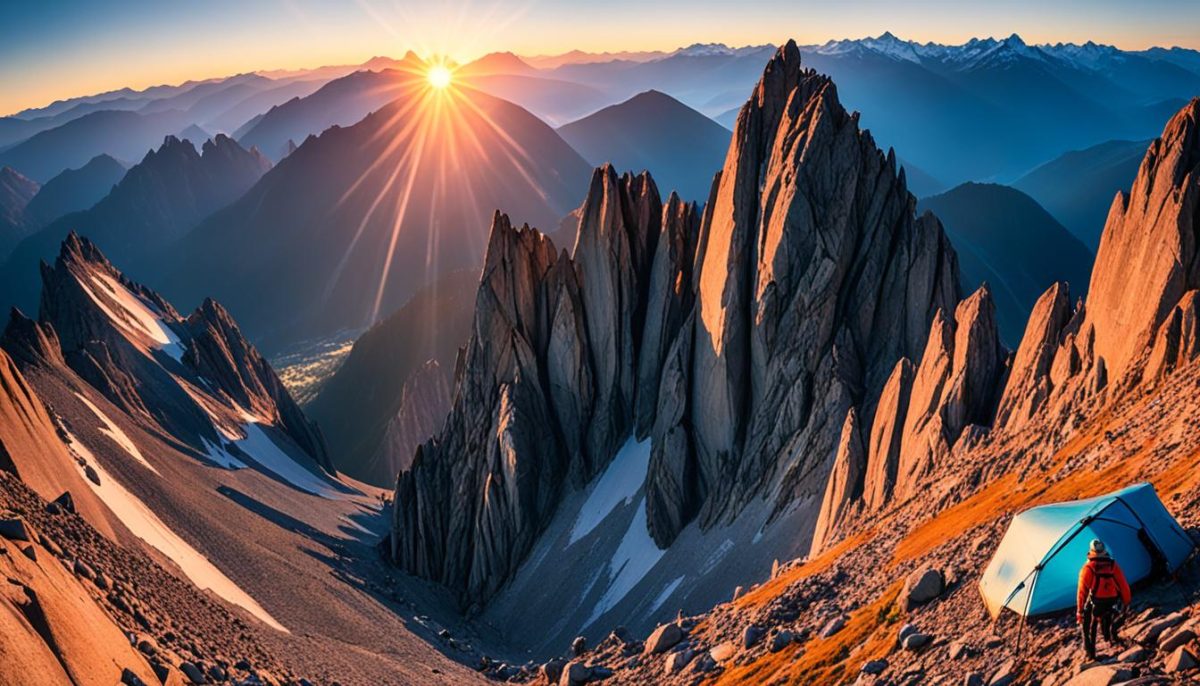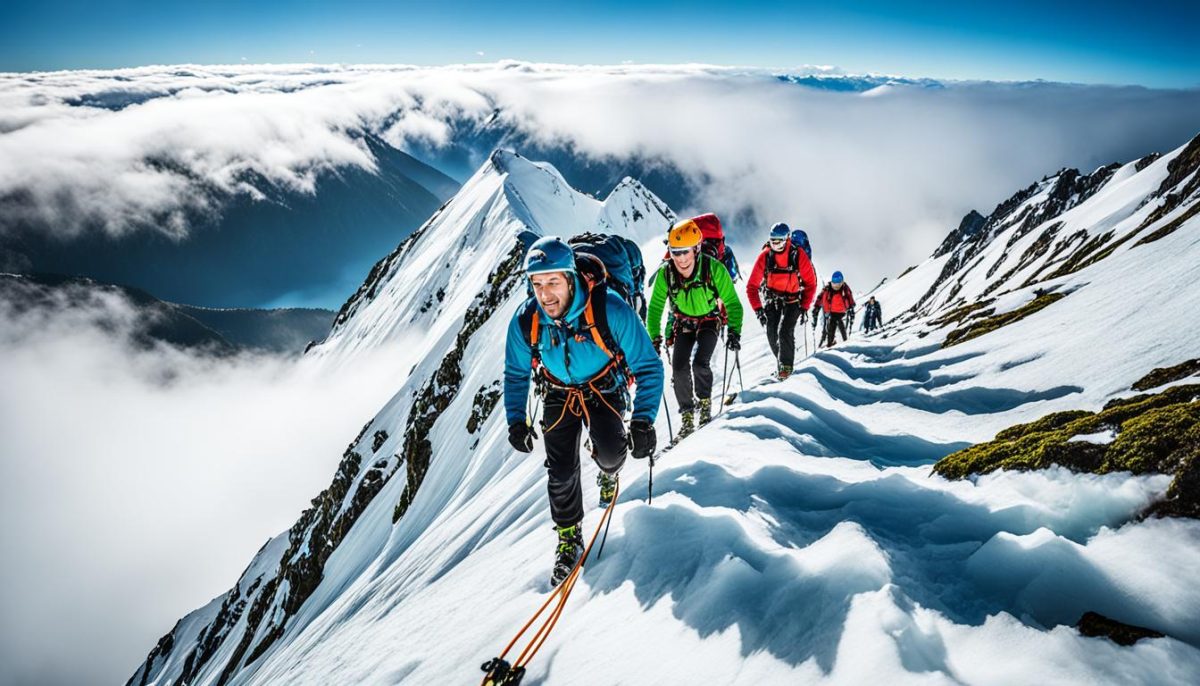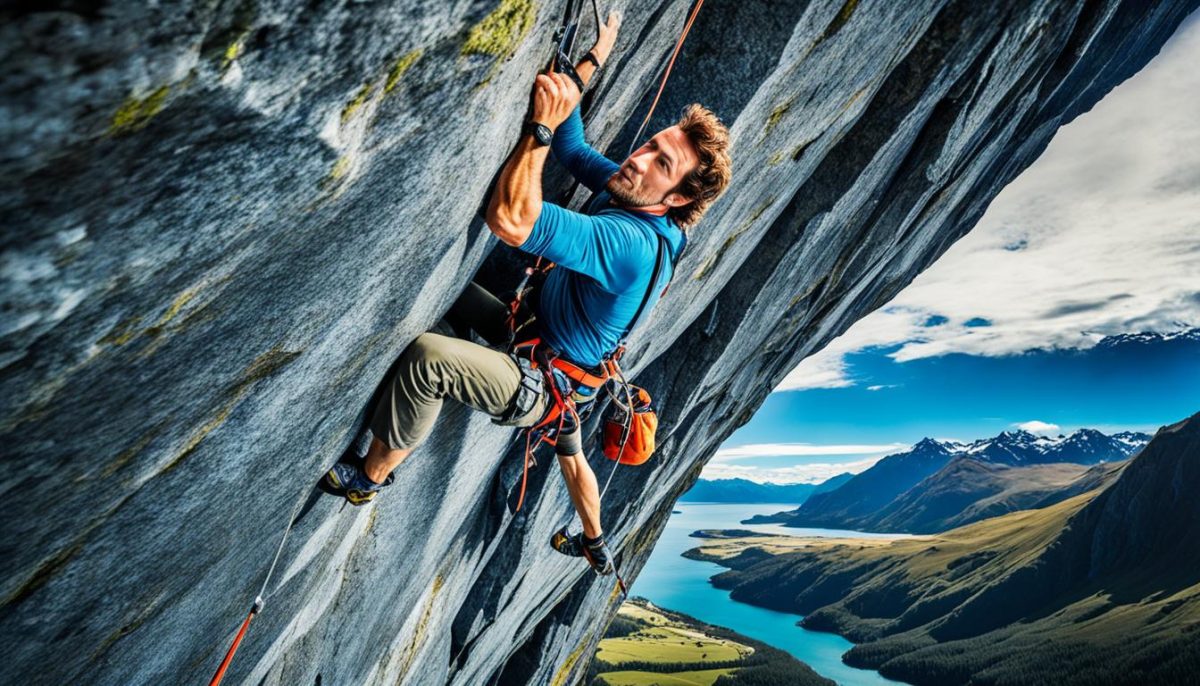Welcome to the exhilarating world of rock climbing, where nature’s canvases become the backdrop for extraordinary vertical adventures. Whether you are a seasoned climber or new to the sport, rock climbing offers a thrilling and challenging experience unlike any other.
Imagine being immersed in the raw beauty of majestic cliffs, rugged mountains, and towering rock formations. These breathtaking landscapes serve as both the stage and the prize for those who dare to climb them.
Rock climbing, in its simplest form, is the act of ascending these natural wonders using physical strength, mental focus, and technical skills. It demands resilience, agility, and an unwavering spirit of adventure.
Whether you prefer the intense challenge of scaling sheer rock faces or the dynamic movements of bouldering, rock climbing offers a variety of disciplines to suit every climber’s preference. From traditional climbing with ropes and gear to the more daring free soloing, where climbers ascend without any safety equipment, there is a climbing style for everyone.
In this article, we will delve into the basics of rock climbing, explore essential safety measures, highlight popular climbing destinations, and uncover the supportive community that fuels this incredible sport. Get ready to embark on a vertical adventure like no other.
The Basics of Rock Climbing
Are you ready to embark on an exciting journey of vertical exploration? In this section, we will delve into the rock climbing basics to equip you with the essential knowledge and skills for a thrilling climbing experience.
Essential Equipment
Before you start climbing, it’s crucial to have the right gear that will ensure your safety and enhance your performance. Here are the must-have equipment for rock climbing:
| Equipment | Description |
|---|---|
| Climbing Shoes | Specially designed shoes with sticky rubber soles for better traction on the rock surface. |
| Harness | A safety harness that secures you to the rope and provides support during climbs. |
| Rope | Dynamic ropes that absorb the energy of a fall and protect climbers from injuries. |
Types of Rock Climbing
Rock climbing encompasses various styles, each offering unique challenges and experiences. Explore the different types of rock climbing:
- Bouldering: Climbing shorter routes without ropes, focusing on technique and problem-solving.
- Sport Climbing: Ascending pre-determined routes with pre-placed bolts for protection.
- Traditional Climbing: Placing your own gear, including anchors and protection, as you climb.
Techniques and Skills
Mastering proper techniques and honing specific skills will elevate your climbing abilities. Here are some essential techniques and skills every climber should develop:
- Footwork: Learning to use your feet efficiently for balance and stability.
- Hand and Finger Techniques: Developing grip strength and precision for holding on to the rock.
- Breathing and Body Positioning: Controlling your breath and maintaining optimal body alignment.
- Route Reading: Analyzing the climb beforehand to strategize your moves.
Remember, rock climbing is not just about physical strength—it requires mental focus, problem-solving, and adaptability. Embrace the challenge and enjoy the exhilarating journey of conquering new heights.
Safety Measures in Rock Climbing
Safety should always be a top priority in rock climbing. Whether you’re a beginner or an experienced climber, following key safety measures is crucial to ensure a secure and enjoyable climbing experience.
The Importance of Proper Belaying Techniques
One of the fundamental safety measures in rock climbing is mastering proper belaying techniques. Belaying is the act of managing the rope to protect the climber in case of a fall. It requires focus, attention to detail, and effective communication between the climber and the belayer.
When belaying, it’s essential to maintain a secure grip on the rope, keeping it taut and providing controlled tension to catch falls. This technique creates a backup system, minimizing the risk of serious injuries during a climb.
Utilizing Helmets for Head Protection
Wearing a helmet is a crucial safety measure that every climber should adopt. It provides essential protection against potential falling rocks or accidental impacts with the climbing surface. A high-quality climbing helmet can significantly reduce the risk of head injuries and ensure the climber’s safety throughout the ascent.
“A helmet can be the difference between a close call and a life-altering injury.” – Alex Honnold
Employing Reliable Anchoring Systems
Effective anchoring systems play a vital role in rock climbing safety. Anchors serve as secure attachment points, preventing the climber from falling in case of a slip or a fall. Anchoring systems can include bolts, cams, or natural features such as cracks or trees. It is essential to inspect and test the integrity of the anchors before relying on them for support.
Always ensure that you are using equipment that meets safety standards, and if you have any doubts, seek advice from experienced climbers or professionals.
Assessing Rock Conditions and Weather Factors
Being aware of rock conditions and weather factors is crucial in maintaining a safe climbing environment. Before embarking on a climb, it’s essential to assess the stability of the rock, checking for loose holds or potential rockfall dangers. Understanding the weather forecast is also crucial, as adverse weather conditions such as rain, high winds, or lightning pose significant risks in rock climbing.
By thoroughly evaluating these factors, climbers can make informed decisions and ensure a secure climbing experience.

| Safety Measure | Description |
|---|---|
| Proper Belaying Techniques | Mastering belaying skills to protect the climber in case of a fall. |
| Utilizing Helmets | Wearing helmets for head protection against falling rocks or impacts. |
| Employing Reliable Anchoring Systems | Using secure attachment points to prevent falls. |
| Assessing Rock Conditions and Weather Factors | Evaluating the stability of the rock and understanding weather risks. |
Rock Climbing Destinations and Community
Embark on a thrilling journey as we explore the world of rock climbing destinations and the vibrant community that surrounds it. Whether you’re an experienced climber or just starting out, there’s something for everyone in this dynamic sport.
When it comes to rock climbing destinations, the options are endless. Picture yourself scaling the towering cliffs of Yosemite National Park, where granite walls offer an unparalleled challenge. Or perhaps you prefer the dramatic sea cliffs of Mallorca, Spain, where the turquoise waters below add an extra element of awe. From the sandstone wonders in Red River Gorge, Kentucky to the majestic peaks of the Dolomites in Italy, each destination offers its own unique beauty and terrain.
But rock climbing is more than just conquering nature’s breathtaking creations. It’s also about the incredible community that surrounds this sport. Climbers come together to share their passion, experiences, and knowledge. Whether you join a local climbing gym or participate in outdoor climbing clubs, you’ll find a supportive and tight-knit community that understands the thrill and challenges of the vertical world. Connect with fellow climbers, exchange tips, and overcome new challenges together.
Top Rock Climbing Destinations
Here are some of the most popular rock climbing destinations that every adventurer should have on their bucket list:
- Joshua Tree National Park, California: Famous for its granite rock formations and diverse climbing routes.
- Kalymnos, Greece: A Mediterranean paradise with limestone cliffs and a lively climbing community.
- Fontainebleau, France: Known for its iconic bouldering and extensive sandstone forests.
- Squamish, British Columbia, Canada: Offers a mix of trad, sport, and bouldering routes amidst stunning mountain scenery.
- Potrero Chico, Mexico: An international hotspot for sport climbing, featuring long limestone walls and a vibrant climbing scene.
So, whether you’re craving an outdoor adventure or seeking new connections within the climbing community, rock climbing destinations offer endless possibilities. Pack your gear, find your next climbing destination, and become part of this incredible vertical world.

Conclusion
Rock climbing is a thrilling and exhilarating activity that allows adventurers to scale nature’s magnificent sculptures and embark on unforgettable vertical journeys. Whether you’re an experienced climber or a beginner, understanding the basics of rock climbing, prioritizing safety measures, and immersing yourself in the climbing community are vital for a successful and enjoyable experience.
In Section 2, we explored the fundamentals of rock climbing, from the essential equipment needed to the different types of climbing techniques. This knowledge provides a solid foundation for climbers to build upon and hone their skills as they progress in their climbing journey.
In Section 3, we emphasized the importance of safety. By following proper belaying techniques, utilizing protective gear like helmets, and staying mindful of rock conditions and weather factors, climbers can ensure a secure climbing environment and reduce the risk of accidents.
In Section 4, we delved into the world of rock climbing destinations and the vibrant communities that thrive within it. From breathtaking natural formations to state-of-the-art climbing gyms, there are endless possibilities for climbers to explore, connect, and share experiences with like-minded individuals.
So, whether you’re drawn to the challenge of reaching new heights or captivated by the beauty of nature’s vertical canvases, rock climbing offers a unique and rewarding experience that will leave you craving more. Lace up your climbing shoes, gather your gear, and join the adventure!




